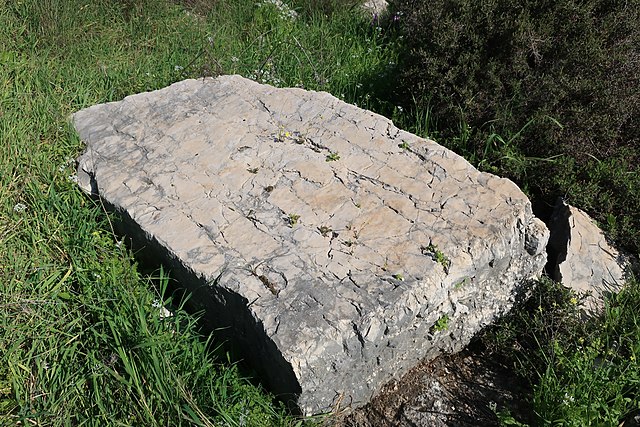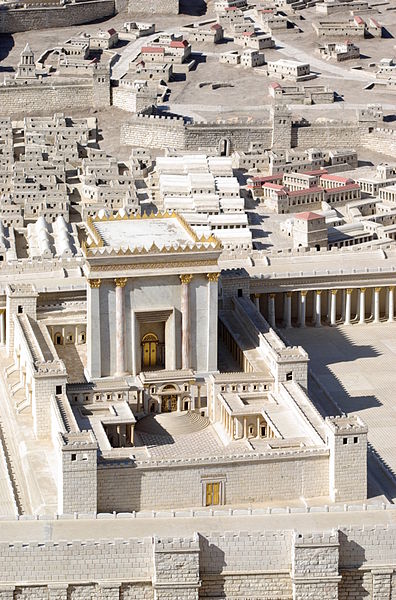Meleke, also transliterated melekeh or malaki, is a lithologic type of white, coarsely-crystalline, thickly bedded-limestone found in the Judaean Mountains in Israel. It has been used in the traditional architecture of Jerusalem since ancient times, especially in Herodian architecture. Though it is often popularly referred to as Jerusalem stone, that phrase can refer to a number of different types of stone found and used in or associated with Jerusalem.
Meleke in the Western Wall, Jerusalem.
Limestone block of stone
Stonemasons in Jerusalem (Old postcard).
Meleke in the Gerofit Formation (Turonian) near Makhtesh Ramon, southern Israel.
Herodian architecture is a style of classical architecture characteristic of the numerous building projects undertaken during the reign of Herod the Great, the Roman client king of Judea. Herod undertook many colossal building projects, most famously his reconstruction of the Temple in Jerusalem. Many of his structures were built upon comparable, previous Hasmonean buildings and most of his have, in their turn, vanished as well.
The Enclosure of the Cave of the Patriarchs, Hebron. This large rectangular enclosure around the famous caves is the only Herodian structure to survive fully intact.
Aerial view of the acropolis of Herodium
Detail of the distinctive pattern of Herodian stone-dressing as seen in the Western Wall Tunnel.
Model of Herod's Temple (renovation of the Second Temple) in the Israel Museum.








